#Russian Iskander Ballistic Missile
Explore tagged Tumblr posts
Text
Meet The World’s New Arms Dealers! Where To Buy Drones, Fighters And Tanks On The Cheap
— September 19th, 2023
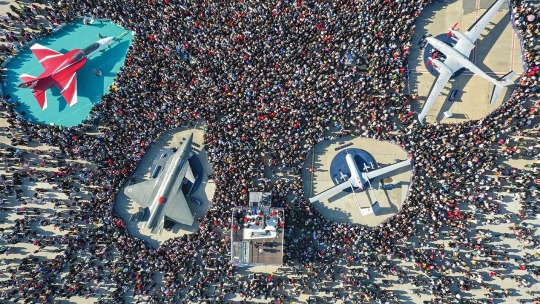
An aerial view of Kizilelma, Bayraktar TB2, HURKUS, and Akinci surrounded by crowds of visitors at Teknofest in Ataturk Airport, Türkiye 🇹🇷. Image: Getty Images
The sight of North Korea’s chubby leader, Kim Jong Un, shaking hands with Vladimir Putin on September 13th—having travelled by train to a spaceport in Russia’s far east to discuss selling its dictator a stash of Korean weapons—was remarkable both on its own terms and for what it said about the business of selling arms. The world’s five biggest arms-sellers (America, Russia, France, China and Germany) account for more than three-quarters of exports. But up-and-coming weapons producers are giving the old guard a run for their money. They are making the most of opportunities created by shifting geopolitics. And they are benefiting from the Russian invasion of Ukraine.
Mr Kim’s trip to Russia followed a visit to Pyongyang in July by Sergei Shoigu, Russia’s defence minister, who wanted to see if North Korea could provide gear that would help his country’s faltering war effort. North Korea would love to find buyers for its military kit. And few regimes are willing to sell Russia arms. China has so far been deterred from providing much more than dual-purpose chips (although it could yet channel more lethal stuff through North Korea). Only Iran has obliged, selling some 2,400 of its Shahed “Kamikaze” drones.
North Korea could provide a wider range of stuff. As well as drones and missiles such as the kn-23, which is almost a replica of the Russian Iskander Ballistic Missile, it could offer self-propelled howitzers and multi-launch rocket systems. According to sources in American intelligence, North Korea has been delivering 152mm shells and Katyusha-type rockets to Russia for the best part of a year. Russia is shopping in Pyongyang and Tehran because both regimes are already so heavily targeted by international sanctions that they have nothing to lose and much to gain by doing business with Mr Putin’s government. They are not so much an “axis of evil” as a marketplace of pariahs.
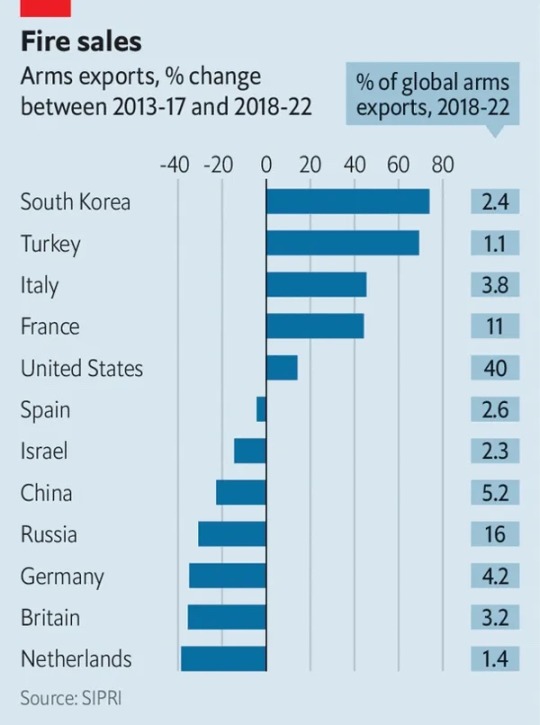
Image: The Economist
If the North Korean arms industry is being boosted by the war in Ukraine, its southern foe is doing even better. South Korea’s arms exporters were cleaning up even before the conflict. In the five years to 2022 the country rose to ninth place in a ranking of weapons-sellers compiled by the Stockholm International Peace Research Institute (SIPRI), a think-tank (See Chart); the government aspires to make South Korea the world’s fourth-largest arms exporter by 2027. Last year it sold arms worth $17bn, more than twice as much as in 2021. Some $14.5bn came from sales to Poland.
The size and scope of the agreements South Korea has reached with Poland, which sees itself as a front-line country in Europe’s defence against a revanchist Russia, is jaw-dropping. The deal includes 1,000 K2 Black Panther tanks, 180 of them delivered rapidly from the army’s own inventory and 820 to be made under licence in Poland. That is more tanks than are operating in the armies of Germany, France, Britain and Italy combined. The package also includes 672 k9 Thunder self-propelled howitzers; 288 K239 Chunmoo Multiple-Rocket Launchers; and 48 Golden Eagle FA-50s, a cut-price fourth-generation fighter jet.
South Korea’s success in the arms business is down to competitive costs, high-quality weaponry and swift delivery, says Tom Waldwyn at the International Institute for Strategic Studies, a think-tank based in London. Its prices reflect Korean manufacturing efficiency. The quality derives from Korea’s experience working with the best American Weaponry, and from its own High-tech Civil Sector. Speedy delivery is possible because the Koreans, facing a major threat across their northern border, run hot production lines that can also ramp up quickly.
Siemon Wezeman, a researcher with sipri’s arms-transfer programme, says wholehearted support from government and attractive credit arrangements are also critical to South Korea’s success. Asian customers like that the fact that it has close ties to America without being America, which is often seen as an unreliable ally. This could also help South Korea clinch a $45bn deal to renew Canada’s ageing submarine fleet. Questions for the future include how far South Korea will go in transferring technology to its customers—a crucial issue for Poland, which sees itself as an exporting partner of South Korea’s, competing with Germany and France in the European market.
If South Korea is the undisputed leader among emerging arms exporters, second place goes to Turkey. Since the ruling ak party came to power in 2002 it has poured money into its defence industry. A goal of achieving near-autarky in weapons production has become more pressing in the face of American and European sanctions—the former imposed in 2019 after Turkey, a nato member, bought Russian s-400 surface-to-air missiles.
Rocket-Fuelled
SIPRI thinks that between 2018 and 2022 Turkey’s weapons exports increased by 69% compared to the previous five-year period, and that its share of the global arms market doubled. According to a report in July by a local industry body, the value of its defence and aerospace exports rose by 38% in 2022, compared with the previous year, reaching $4.4bn. The target for this year is $6bn. Pakistan is receiving modernised submarines from Turkey. And the last of four Corvettes which Turkey has sold to the Pakistan navy was launched last month. More sales to other countries are likely, both because Turkey’s ships are competitively priced and because Turkey has few qualms about who it will sell to.
Yet Turkey’s export charge is led by armed drones. On July 18th Turkey signed a $3bn agreement with Saudi Arabia to supply the Akinci unmanned combat aerial vehicle (UCAV). It was made by Baykar, which also produces the Bayraktar tb2—a drone that has been used in combat by Libya, Azerbaijan, Ethiopia and Ukraine. The tb2 was developed to hunt Kurdish militants after America refused to sell Turkey its Predator drone. More than 20 countries lined up to buy it because it was cheaper and more readily available than the American alternative, and more reliable than the Chinese Unmanned Combat Aerial Vehicles UCAVs that had previously dominated the non-Western market.
The Akinci (pictured right) is more powerful. It can carry lots of big weapons, including air-to-air missiles and the som-a, a stealthy cruise missile with a range of 250km. It will find buyers among several other Gulf countries, such as Qatar, Oman and the UAE, who are keen to hedge against souring relations with America by reducing their reliance on its weaponry. These countries have ambitions to build their own defence industries; they see Turkey as a willing partner and an example to follow.
Turkey’s ambitions are shown by what else is in the pipeline. Its new Navy Flagship, the Anadolu, is a 25,000-ton amphibious assault ship and light aircraft-carrier that will carry Bayraktar ucavs. At least one Gulf country is said to be in talks to buy a similar ship. Turkey’s Fifth-Generation Fighter Jet, the Kaan, in which Pakistan and Azerbaijan are partners, should fly before the end of the year. Developed with help from Britain’s BAE Systems and Rolls-Royce, the Kaan could be seen as a response to Turkey’s ejection from the F-35 partner programme (as punishment for buying the S-400). Turkey will market the plane to anyone America will not sell F-35s to—or who balks at the conditions. Once again, Gulf countries may be first in line.
South Korea and Turkey have benefited from the woes of their main competitors. Russia’s arms exports between 2018 and 2022 were 31% lower than in the preceding four-year period, according to sipri. It is facing further large declines because of the strain its war of aggression is putting on its defence industries, its geopolitical isolation and the efforts of two major customers, India and China, to reduce their reliance on Russian weaponry.
India, previously Russia’s biggest customer, cut its purchases of Russian arms by 37% in the 2018-22 period. It is probably wishing it had gone further: Russia’s largely state-controlled arms industry is having to put its own army’s needs ahead of commitments to customers. Many of India’s 272 Su-30mkis, the backbone of its air force, are kaput because Russia cannot supply parts. Some of Russia’s weapons have performed poorly in Ukraine, compared with nato kit. And sanctions on Russia are limiting trade in things such as microchips, ball-bearings, machine tools and optical systems, which will hinder Russia’s ability to sell combat aircraft, attack helicopters and other lethal contraptions. The longer the war in Ukraine lasts, the more Russia will struggle to claw back its position in the global arms market.
Damp Squibs
As for China, over half its arms exports in the 2018-22 period went to just one country, Pakistan, which it sees as an ally against India. Nearly 80% of Pakistan’s major weapons needs are met by China, according to sipri. These include combat aircraft, missiles, frigates and submarines. Beijing has no interest in its customers’ human-rights records, how they plan to use what China sends or whether they are under Western sanctions.
But China’s arms industry also has its problems. One challenge, says Mr Waldwyn, is that although China set out to dominate the military drone market a decade ago, its customers got fed up with poor quality and even worse support, opening a door for Turkey. A second is that, with the exception of a putative submarine deal with Thailand and a package of weapons for Myanmar, other countries in South-East Asia are tired of Chinese bullying and “won’t touch them”, says Mr Wezeman.
At least China does not have to worry about competition from India. Despite much effort, India’s growth as an arms-exporter has been glacial. The government of Narendra Modi has listed a huge range of weapons parts that must be made in India; it hopes homemade light tanks and artillery will enter service by the end of the decade. But India has relied for too long on the transfer of technology from Russia under production-licensing agreements for aircraft, tanks and warships that have failed to deliver. Investment is wastefully channelled through the state-owned bodies. Red tape suffocates initiative.
Projects such as the Tejas light combat aircraft have taken decades to reach production, and remain fraught with problems. The Dhruv light helicopter, launched in 2002, has crashed dozens of times. After decades in development, the Arjun Mk-2 tank turned out to be too heavy for deployment across the border with Pakistan. Locally made kit is often rejected by India’s own armed forces; “If they don’t want it, exporting it becomes impossible,” says Mr Wezeman. South Korea and Turkey show how countries can build lucrative arms businesses that underpin domestic security. India, for all its bombast, is a lesson in how not to do it. ■
#International#Young Guns 💪#Türkiye 🇹🇷#World’s 🌎 Arm Dealers#Drones | Fighters | Tanks#America 🇺🇸 | Russia 🇷🇺 | France 🇫🇷 | China 🇨🇳 | Germany 🇩🇪#Kim Jong Un | Vladimir Putin#North Korea 🇰🇵 | Pyongyang |#Sergei Shoigu#Ukraine 🇺🇦 | Russia 🇷🇺 | War#Iran 🇮🇷 | Kamikaze Drones#Russian Iskander Ballistic Missile#Katyusha Rockets 🚀#Stockholm International Peace Research Institute (SIPRI)#K2 Black Panther Tanks#Poland 🇵🇱#Britain 🇬🇧 | Italy 🇮🇹#Tom Waldwyn | The International Institute For Strategic Studies#Siemon Wezeman | Researcher | SIPRI#South Korea 🇰🇷#Canada 🇨🇦 🍁#Türkiye 🇹🇷 | Saudi Arabia 🇸🇦#Pakistan 🇵🇰 | Türkiye 🇹🇷#Gulf Countries | Qatar 🇶🇦 | Oman 🇴🇲 | UAE 🇦🇪#Baykar | Bayraktar#Chinese Unmanned Combat Aerial Vehicles (UCAVs)#Libya 🇱🇾 | Azerbaijan 🇦🇿 | Ethiopia 🇪🇹 | Ukraine 🇺🇦#Turkey’s Fifth-Generation Fighter Jet ✈️ | The Kaan#F-35 | S-400#Myanmar 🇲🇲
0 notes
Text
Another one signal about peace by bloody Russia



Happy birthday, my Kyiv 🫂




Air defense forces shot down 45 missiles and 266 UAVs over Ukraine at night
From the evening of May 24 to the morning of May 25, the enemy used: ▪️9 Iskander-M/KN-23 ballistic missiles ▪️55 cruise missiles "X-101", "Kalibr" ▪️1 cruise missile "X-22"; ▪️4 guided aircraft missiles "X-59/69"; ▪️298 strike UAVs.
According to preliminary data, the air defense system shot down 45 X-101 and Kalibr cruise missiles and neutralized 266 enemy Shahed and other types of UAVs throughout the country. 139 drones were shot down by firepower, and another 127 were locally lost or suppressed by electronic warfare.
Unfortunately, most regions of Ukraine were affected by the enemy attack. We recorded hits in 22 locations and the fall of downed missiles and UAVs in 15 locations.
There are 50 injured and 13 dead from the Russian attack at night, including 3 children aged 8, 12, and 17.
According to the SES, several regions were attacked: Kyiv and the region, Zhytomyr, Ternopil, Khmelnytsky, Odesa, Mykolaiv, and Sumy regions.
#ukraine#kyiv#zhytomyr#mykolaiv#genocide#stop the genocide#russia is a terrorist state#russian invasion of ukraine#russo ukrainian war#russia must burn#stand with ukraine#standwithukraine#український tumblr#український тамблер#arm ukraine#current events#breaking news#world news#the united states#unitedstates#fuck russia#fuck trump
78 notes
·
View notes
Text
‼️As a result of the Russian missile attack in Odesa, 10 people were killed. Among them were 7 police officers, a medic and two local residents, - the State Emergency Service and the National Police.
The number of injured people - 43, including 4 children.
The strike was carried out by an Iskander ballistic missile. The impact damaged a dormitory, a high-rise building, an administrative building and cars.









#ukraine#russia is a terrorist state#russia invades ukraine#russian war crimes#russia ukraine war#russian invasion#russian agression#russian terrorism#russia must burn#fuck russia#russia#russian culture
100 notes
·
View notes
Text
Ukrainian drones blew up a large Russian arms depot west of Moscow. The blast was large enough to have been detected by earthquake sensors.
A Ukrainian drone attack on a large Russian weapons depot caused a blast that was picked up by earthquake monitoring stations, in one of the biggest strikes on Moscow’s military arsenal since the war began. Pro-Russian military bloggers said Ukraine struck an arsenal for the storage of missiles, ammunition and explosives in Toropets, a historic town more than 300 miles north of Ukraine and about 230 miles west of Moscow. Videos and images on social media showed a huge ball of flame rising high into the night sky and detonations thundering across a lake, in a region not far from the border with Belarus. The strike was part of a broader Ukrainian drone campaign targeting Russian oil refineries, power plants, airfields and military factories, and highlights Kyiv’s enhanced long-range drone capabilities. Earthquake monitoring stations registered what sensors thought was a minor earthquake in the area.
The blast was so big that in the first couple of seconds it appears to be during daytime.
youtube
The Kyiv Independent has additional details.
Arms depot in Russia's Tver Oblast built to withstand nuclear explosion heavily damaged by Ukrainian drones
Back in 2018, the Russian Defense Ministry bragged that this facility would be prepared to withstand even a nuclear explosion. Six years later, the claim was proven to be false. According to the SBU, the arsenal stored ballistic missiles, including Iskanders, anti-aircraft missiles, artillery ammunition, and KAB guided bombs. The attack "literally wiped off the face of the earth a large warehouse of the main missile and artillery department of the Russian Defense Ministry," the SBU source said. The construction of the arsenal, controlled by the Main Missile and Artillery Directorate, began in 2015 in the town of Toropets, located 480 kilometers north of Ukraine. The construction was part of a 2012 government program set to improve Russia's storage of missiles, ammunition, and explosives. According to Russia's Defense Ministry, the program, worth 90 billion rubles (nearly $980 million), called for 13 modern arms depots to be built. [ ... ] Yet the source in the Security Service of Ukraine (SBU) told the Kyiv Independent that a "very powerful detonation" occurred, and the affected area was 6 kilometers (3.7 miles) wide. NASA satellites also recorded a surge in thermal activity in Tver Oblast, where the 107th arsenal of the Main Missile and Artillery Directorate is located. "The arsenal seems to have been built correctly, with bunkered storage facilities that can hold up to 240 tons of ammunition each," Serhiy Zgurets, military expert and CEO of the Ukrainian media Defense Express, told the Kyiv Independent.
As Joe Biden might put it, this is "a big fucking deal". Months worth of ammunition, missiles, and other ordnance which was waiting to be used against Ukrainians has been eliminated.
In total, about 30,000 tons of ammunition were stored in the arsenal in Toropets, which could have been enough to conduct attacks for months, according to the expert. Russia most likely stored 122 mm Grad ammunition, 82 mm mines, and missiles for Buk medium-range surface-to-air missile systems, among other munitions, according to Zgurets.
Ukraine apparently destroyed 30,000 tons (i.e. 30 kilotons) of ammo. For comparison, the atomic bomb dropped on Hiroshima was the equivalent of 15 kilotons.
Ukrainians are intelligent and resourceful. They are now building drones which cannot be jammed by electronic warfare. They may have used those to get to Toropets.
And it seems a bit weird that Russia would build a gigantic arsenal just 4.51 km (less than 3 miles) from downtown Toropets – a scenic town and local administrative center.

So Ukraine has now penetrated and destroyed an impenetrable arms depot. Previously, Ukraine has stopped unstoppable Kinzhal Russian missiles. This war is unwinnable for Russia but the country continues to humiliate itself with its unmistakable military ineptitude.
#invasion of ukraine#toropets#explosion#seismic blast#ammunition arsenal#arms depot#ukrainian drones#sbu#zsu#russia is losing the war#russia's war of aggression#vladimir putin#бпла#россия#торопец#взрыв#арсенал#склад боеприпасов#владимир путин#путин хуйло#добей путина#союз постсоветских клептократических ватников#россия проигрывает войну#агрессивная война россии#руки прочь от украины!#зсу#сбу#деокупація#україна переможе#слава україні!
35 notes
·
View notes
Text
I didn't survive 35 missiles of various types and 23 attack UAVs:
- 16 "Iskander-M"/KN-23 ballistic missiles from Bryansk, Voronezh and Kursk regions - Russian Federation
- 14 X-101 cruise missiles from Tu-95MS aircraft from the airspace of Volgograd region - Russian Federation
- 4 S-300/S-400 anti-aircraft guided missiles from Belgorod region - Russian Federation
- 1 missile of an unspecified type from Belgorod region - Russian Federation;
- 23 Shahed-131/136 attack UAVs from Primorsko-Akhtarsk rf
in just this one morning so a person I followed for years in my fandom casually declared that genocide of Ukrainians is a lesser evil compared to genocide of Palestinians. Specifically in those terms, not touching upon internal USAian or other International issues.
#if they are living in palestine at the moment all be forgiven#if they in the states or somewhere fuck them to be honest#like i am expecting this from a pro pal who doesn't know what a war is#but this#is actually so fucking heartbreaking#you wake up everyday to see the number of dead this night#you check your timeline all in necrologues#you have seen your home only in dreams in the past ten years#and it's always a nightmare#but hey#it's a lesser evil for you to die i guess!!!
21 notes
·
View notes
Text
Odessa 💔 Today, 4-year-old Zlatochka, who was killed by Russian terrorists, was buried here.. The girl was wounded during the Russian shelling of the coast of the city on April 29 - then Russia hit the Iskander-M with a cluster warhead.. Zlata underwent heart surgery, was in a coma all the time. According to the father, the EEG of the brain did not show activity. The day before her death, all organs failed. On May 23, the child's heart stopped…. She was the eighth victim of that attack. russia's ballistic missile killed a child.. the country of terror and darkness.. Condolences to all parents from whom the russian terror took the dearest….

#stopputin#stoprussia#russian agression#save ukraine#stoprussianaggression#russian ukrainian war#russian war crimes#stop russia#war in ukraine#odesa
21 notes
·
View notes
Text
North Korean military engineers have been deployed to help Russia target Ukraine with ballistic missiles, and fighters operating in occupied areas of the country have already been killed, senior officials in Kyiv and Seoul said.
There are dozens of North Koreans behind Russian lines, in teams that “support launcher systems for KN-23 missiles”, a source in Ukraine told the Guardian.
Kim Jong-un, the North Korean leader, last year travelled to Russia for a summit with Vladimir Putin where the two men bolstered their deepening ties with a secret arms deal.
Pyongyang’s ammunition shipments were vital in allowing Russian forces to advance in a grinding war of attrition in eastern Ukraine this summer. But it appears increasingly clear that the agreement went beyond supplying materiel.
North Koreans were among the dead after a Ukrainian missile strike on Russian-occupied territory near Donetsk last week, South Korean and Ukrainian officials said. It was not clear if they were military engineers or other forces.
Foreigners have fought as mercenaries for Russia, but if North Koreans are on the ground it would mark the first time a foreign government has sent troops in uniform to support Moscow’s war.
South Korea’s defence minister, Kim Yong-hyun, told MPs in Seoul this week that it was “highly likely” that North Korean officers had been deployed to fight alongside Russians, and several had died in the attack, although he did not give further details.
Andriy Kovalenko, the head of Ukraine’s Centre for Countering Disinformation, said in a post on Telegram that some North Koreans had been killed in Russia. His organisation is part of the national security and defence council.
On Wednesday the Ukrainian military said they had destroyed North Korean ammunition in a strike on a depot in the Bryansk region, 75 miles (120 km) from the Ukrainian border.
Joining the war on Ukraine gives North Korea a chance to test weapons, gain combat experience for its troops and bolster its standing with a powerful international ally.
“For North Korea, which has supplied Russia with many shells and missiles, it’s crucial to learn how to handle different weapons and gain real-world combat experience,” Lim Eul-chul, a professor at the Institute for Far Eastern Studies in Seoul, told the AFP news agency. “This might even be a driving factor behind sending North Korean soldiers – to provide them with diverse experiences and wartime training.”
North Korean missiles and shells are of poor quality and unreliable but have been key to keeping Russian guns firing relentlessly on Ukraine’s better-trained and motivated army.
Pyongyang is estimated to have provided around half the larger-calibre ammunition used on the battlefield this year, more than 2m rounds, a Ukrainian source said. It also provided KN-23 missiles, which were used in dozens of strikes across Ukraine last winter, Ukrainian media reported. After a pause of several months, they were deployed again from July.
The KN-23 is a short-range ballistic missile that was first tested in 2019 and has been compared to Russia’s Iskander-M missiles. It is thought to have a range of about 280 miles when carrying a 500kg warhead.
Moscow and Pyongyang have denied weapons sales even as they have publicly celebrated deepening ties in recent months. The Kremlin on Thursday dismissed North Korean troop deployments in Ukraine as “another bit of fake news”.
Kim described Putin as his “closest comrade” in a birthday message sent this week, and Putin made a state visit to North Korea in June during which the leaders signed a mutual aid agreement.
In return for its missiles and other military hardware, North Korea is thought to be seeking Russian help with its spy satellite programme, which has had embarrassing failures over the past two years.
It is not clear how far Russia is willing to go in sharing sensitive military technology with North Korea in return for continued support in Ukraine.
Pyongyang, after decades of UN-led sanctions targeting its ballistic missile and nuclear weapons programmes, is attempting to strengthen its ties with Russia and China as part of an alliance against “western hegemony and imperialism”.
The strategy paid dividends in March when Russia used its veto in the UN security council to in effect end UN monitoring of sanctions violations, a move publicly welcomed by Pyongyang.
9 notes
·
View notes
Text
Friday 5/23/2025
Russia drops air strikes during prisoners-of-war exchange
Russia and Ukraine agreed to hostage exchange that would be implemented in stages as part of the begnning stages of lasting ceasfire negotiations. May 23, the day of Phase One, Ukraine and Russia swapped 390 prisoners, followed by 614 the next day. Ukraine President, Volodymyr Zelensky, posted on X that the prisoners were from “our Armed Forces, the State Border Guard Service, the National Guard of Ukraine." During the night, Russia began to drop bombs and use drones to target civillian areas of Ukraine. The Armed Forces Operational Command in Poland posted on X “[i]ntensive activity of long-range aviation of the Russian Federation has been observed, associated with strikes carried out on objects located, among others, in the western territory of Ukraine.” Ukraine's air force said in a post “Russia launched a total of 367 ‘air attack vehicles’ -- among them nine Iskander ballistic missiles, 56 cruise missiles, four guided air missiles and 298 attack drones -- at targets across the country.” Ukraine's Interior Ministry stated “at least 18 people were killed -- among them three children from the same family -- and 85 people injured. More than 80 residential buildings were damaged and 27 fires recorded.” Zelensky has responded to the attacks stating “[t]hese were deliberate strikes on ordinary cities… Without truly strong pressure on the Russian leadership, this brutality cannot be stopped. Sanctions will certainly help. Determination matters now — the determination of the United States, of European countries, and of all those around the world who seek peace." Zelensky once again urged the US and Europe to put sanctions on Russia stating “[t]he war can be stopped, but only through the necessary force of pressure on Russia. Putin must be forced to think not about launching missiles, but about ending the war." Trump has recently condemned Putin’s actions against Ukraine, claiming that the killing needs to stop, yet many have critized his inaction to pressure Russia into a ceasefire.
https://abcnews.go.com/International/russia-hits-ukraine-massive-drone-missile-barrage-amid/story?id=122173886
https://www.cbsnews.com/news/ukraine-russia-prisoner-exchange-drone-missile-attack-ceasefire/
https://kyivindependent.com/ukraine-russia-prisoner-exchange/
5 notes
·
View notes
Text
Vladimir Putin unleashed a missile strike to 'sink' a cargo ship amid unconfirmed Russian claims it was carrying British weapons for use by Ukraine.
Two Iskander-M ballistic missiles hit the Panama-flagged container ship MSC LEVANTE F - reportedly Swiss-owned - soon after it arrived in Odesa on March 1, after making a stop in Turkey.
Two port workers were believed to have been wounded in the strike, which also damaged infrastructure, Ukrainian reports said.
The report of the attack comes as British prime minister Sir Keir Starmer today hosts Volodymyr Zelensky and other European leaders to discuss the future of the wartorn nation following the Ukrainian president's televised spat with US president Donald Trump and Vice President J.D. Vance.
5 notes
·
View notes
Text
Russian forces conducted one of the largest combined drone and missile strikes of the war against Ukraine on the night of May 23 to 24, but used fewer missiles than in previous large-scale combined strikes. The Ukrainian Air Force reported on May 24 that Russian forces launched 14 Iskander-M ballistic missiles from the directions of Taganrog, Rostov Oblast; Yeysk, Krasnodar Krai; Bryansk City; and occupied Crimea; and 250 Shahed and decoy drones from the directions of Bryansk, Kursk, and Oryol cities; Millerovo, Rostov Oblast; Shatalovo, Smolensk Oblast; and Primorsko-Akhtarsk, Krasnodar Krai. The Ukrainian Air Force reported that Ukrainian forces shot down six Iskander-M missiles and 128 Shahed drones, and that 117 drones were “lost in location.” Ukrainian officials reported that the Russian strike heavily targeted Kyiv City and that drones and missiles also struck Odesa, Kharkiv, Dnipropetrovsk, Donetsk, and Zaporizhia oblasts. The Russian Ministry of Foreign Affairs (MFA) claimed prior to the strike on March 23 that Russian forces would respond "adequately" to recent Ukrainian strikes against Russian positions and defense facilities. Russian forces have significantly intensified their nightly attacks against Ukraine over the last five months and have conducted several of the largest strikes of the entire war since January 2025.
Russian forces appear to be reducing their use of cruise missiles, indicating that increased Russian drone production and innovations to long-range drones and related strike tactics are providing Russian forces with a cheaper alternative to cruise missiles. Ukrainian Air Force Spokesperson Colonel Yurii Ihnat stated on May 24 that Ukrainian forces are struggling to use Patriot air defense systems to down modified Russian Iskander-M ballistic missiles due to recent Russian improvements, including enhancements that enable the missile to change trajectory and perform maneuvers rather than flying in a straight line.
the other war continues to evolve
4 notes
·
View notes
Text

Today was the largest Russian combined missile and drone attack on Ukraine. Russia launched 127 missiles and 109 drones. Of which 102 missiles and 99 drones were shot down: - 1 Kh-47M2 "Kinzhal" aeroballistic missile; - 1 "Iskander-M"/KN-23 ballistic missile; - 1 Kh-22 cruise missile; - 99 cruise missiles Kh-101, "Kalibr", guided air missiles Kh-59/69; - 99 attack UAVs "Shahed-131/136". In addition, several UAVs were lost in location on the territory of Ukraine, two more crossed the state border with the Republic of Belarus. Source: Special Kherson Cat
P.S.Russian war criminals spent over a billion dollars to carry out today's missile attack and achieved precisely - nothing...! Ukraine was generally quite successful in fending off a massive Russian missile attack on Ukraine's civilian infrastructure...
9 notes
·
View notes
Text
In the democratic world is "Never again", in the Russian world - "We can and will proudly repeat"
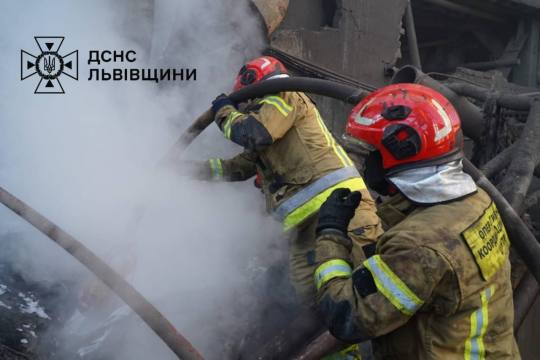
Attacked electricity generation and transmission facilities in Poltava, Kirovohrad, Zaporizhzhia, Lviv, Ivano-Frankivsk, and Vinnytsia regions.
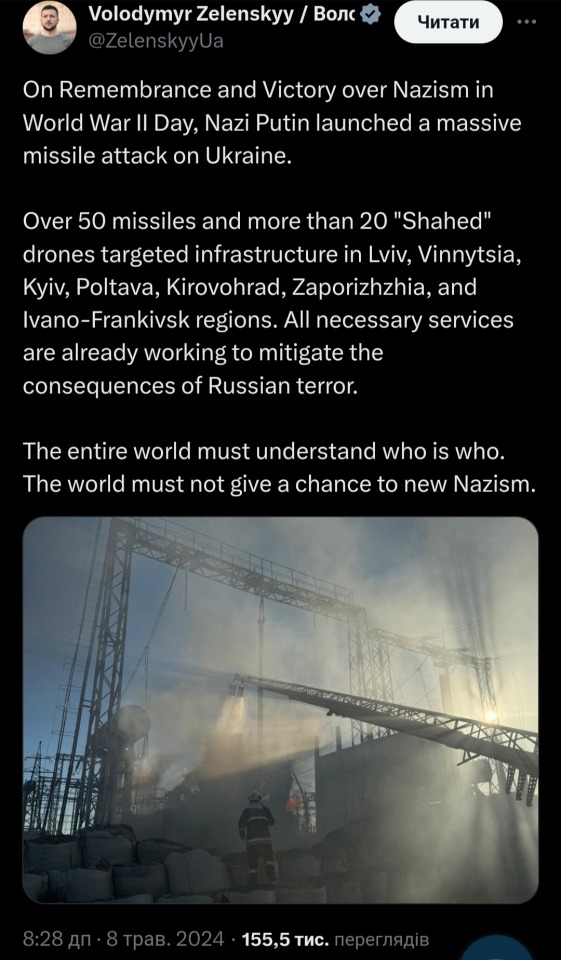

I urgently recommend you to watch Zelenskyy's speech. I was literally crying from the start. I even downloaded video but Tumblr once again crushed for me. I'm sorry.
Back to modern time.
At night, Russians attacked three DTEK thermal power plants. The equipment was seriously damaged.
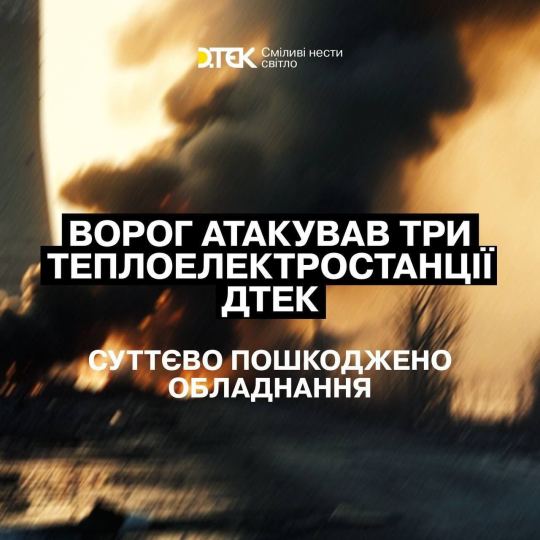
This is the fifth massive shelling of the company's energy facilities in the last month and a half.
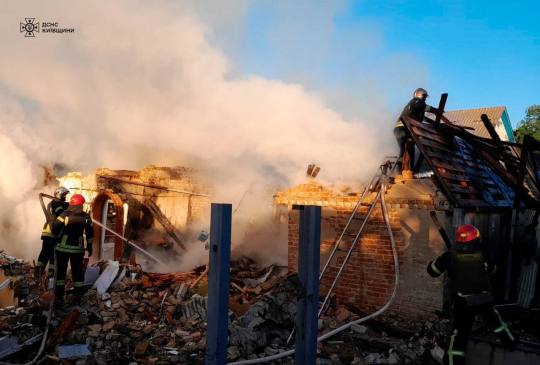
In the Kyiv region, 13 private buildings were destroyed and damaged as a result of the night shelling. Debris fell in four districts of the region.
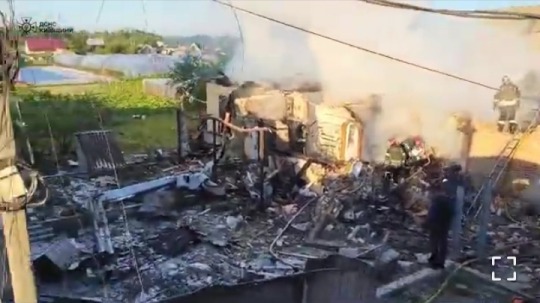
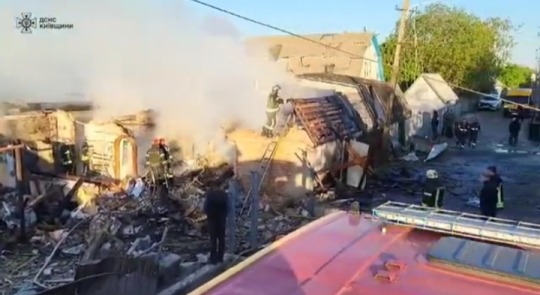
In the Lviv region, the occupiers attacked a gas storage facility in Stryi district and a thermal power plant in Chervonohrad district.
An 8-year-old child was injured in Kirovohrad region. A critical infrastructure facility was damaged in the region, and 13 houses were destroyed.
At night, on May 8, at 02:42, in Kharkiv, air defense forces shot down two Shaheds in the northern part of the city. No damage and no casualties - HOVA.
About 15 settlements of the Kharkiv region were hit by enemy artillery and mortar attacks: Sinkivka, Stepova Novoselivka, Berestove, and others. Dvorichanske and Sinkivka came under aerial bombardment.
17:00 с. Kucherivka, Kupyansk district. A private house was burning as a result of the shelling.
May 7, 09:30 a.m. Cherkaski Tyshky, Kharkiv district. The roofs of two private houses were damaged as a result of hostile shelling.
Ukrainian troops repelled 16 attacks in the Kupyansk sector over the last day, including in the areas of Sinkivka, Pishchane, and Berestove in Kharkiv region.
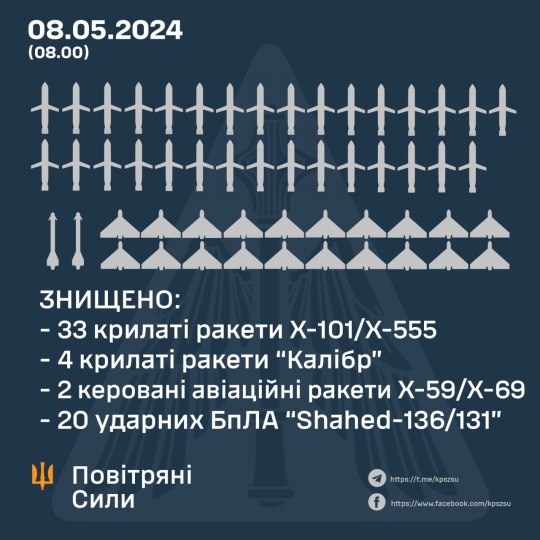
The Ukrainian Air Force destroyed 39/55 missiles and 20/21 UAVs:
▪️ 0/1 X-47M2 Kinzhal aerial ballistic missiles;
▪️ 0/2 Iskander-M ballistic missiles;
▪️ 4/4 Kalibr cruise missiles;
▪️ 33/45 X-101/X-555 cruise missiles;
▪️ 0/1 Iskander-K cruise missiles;
▪️ 2/2 X-59/X-69 guided missiles;
▪️ 20/21 Shahed-131/136 strike UAVs.
Thanks to the Air Force, I woke up today. And I even had the luxury of not having to go to the corridor, even though my region was under attack.
Back to World War II.


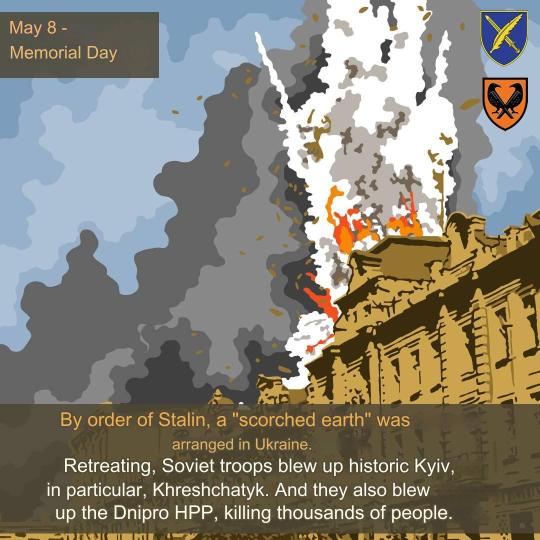




Photos from AFUStratCom.

#Mordor On this day in 1941, representatives of the Allied Wehrmacht were invited to a parade in Moscow. World War II had been going on for 1 year and 8 months.
Modern time:

On this day in 2014, Ukrainian miners spoke about the torture of the Russian occupiers in Donetsk and showed a tattoo that was almost cut off by a light bulb.
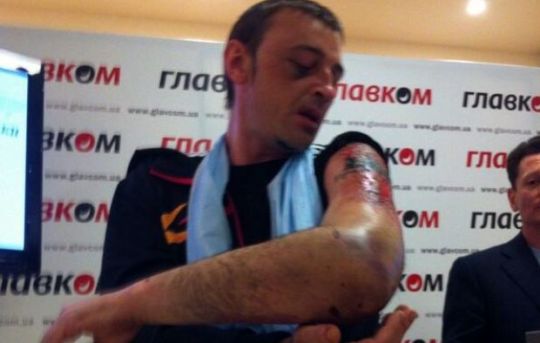

Russia never changed. Russia never learned.

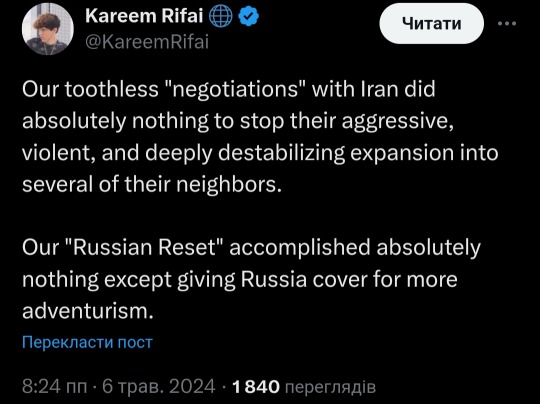
Total victory and liberation of Ukraine is the only possible scenario for peace.

#ukraine#russo ukrainian war#russian invasion of ukraine#russia is a terrorist state#russia war crimes#war crimes#russia must burn#stop the genocide#genocide#world#united states#standwithukraine#stand with ukraine#arm ukraine#important#signal boost#history#world war 2#український tumblr#український тамблер#russian terrorism#stop terrorism#stop russia#fuck russia#war in ukraine#video#unmute#sound on#link click#war
58 notes
·
View notes
Text
‼️The Russians struck Hulyaipole in the Dnipropetrovsk region on the morning of July 1, the Defense Forces of Southern Ukraine reported.
Previously, the Russians used two ballistic missiles, probably of the Iskander-M type.
As a result of the strike, a cultural center, two shops and private houses were destroyed. There are killed and wounded among local residents.
Photo: Defense Forces of Southern Ukraine



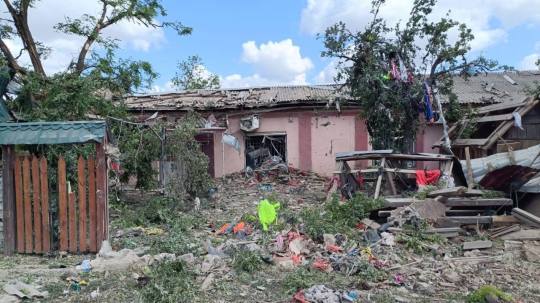

#ukraine#russia is a terrorist state#russia invades ukraine#russian war crimes#russia ukraine war#russian invasion#russian agression#russian terrorism#russia must burn#fuck russia#russia#russian culture
22 notes
·
View notes
Text
Russia has confirmed its forces launched major overnight missile strikes on Ukrainian military plants as well as energy infrastructure. Kiev suffered significant damage, resulting in casualties and several fires in the city.
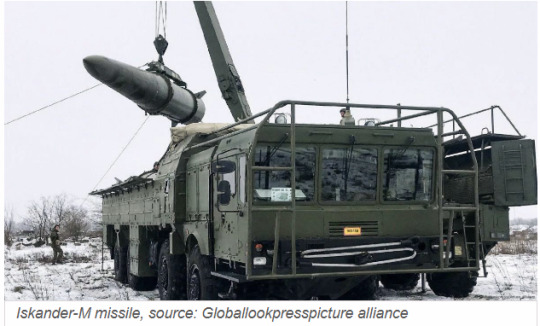
“The goals of the strikes have been accomplished, all designated facilities have been hit,” it said. The oblasts of Kyiv, Sumy, Poltava, and Chernigov were struck in the widespread assault.
Importantly the attack involved Iskander-M ballistic missiles and over 120 drones, which Ukrainian forces claiming to have shot down seven Iskanders and 71 UAVs, according to Russian media sources.
The Ukrainian capital appears to have been one of the hardest hit cities in the wave of strikes, which has been a rarity over the last year. One person was killed there, and four injured, including a nine-year-old girl, Kiev’s mayor said.
3 notes
·
View notes
Text
Putin has been bombing Ukraine for 11 years. Maria Corina Machado in Time’s Top 100. Yashin opens a public office.
You’re watching the news from the weekly rally at the Russian Embassy in Lisbon. Today is April 19, 2:30 PM.
April 12 marked 11 years since the beginning of the war in Donbas. Last year, we talked about how Putin and his propaganda machine lied, how separatists shelled territory under their own control to maintain a state of war, how equipment was withdrawn, and how people in the Russian-occupied parts of Donbas became increasingly impoverished. When civilian casualties dropped to just dozens per year, propaganda ramped up the full-scale war, pushing the story that “they bombed Donbas for 8 years.” https://adrl.pt/event/2024-04-13/en
On April 13, Russian troops launched two ballistic missiles at the center of Sumy. Thirty-four people were killed, including two children; 117 were injured. The BBC Russian Service reports that the strike happened during the day—many of the victims were on the streets, in cars, or using public transport. British Prime Minister Keir Starmer condemned the attack, stating, “Putin must now agree to a full and immediate ceasefire without conditions,” just as Ukraine has. https://www.bbc.com/russian/articles/cm2401dn1nlo
On April 18, Russian forces hit Kharkiv with three Iskander missiles. Ukrainska Pravda reported that one person was killed and 113 injured, including nine children. Fifteen apartment buildings were damaged. https://www.pravda.com.ua/rus/news/2025/04/18/7508082/
On April 16, Time magazine published its list of the 100 most influential people of 2025. Venezuelan opposition leader Maria Corina Machado was included. U.S. Secretary of State Marco Rubio described her as Venezuela’s “Iron Lady.” https://time.com/collections/100-most-influential-people-2025/7273783/maria-corina-machado/
Last year, we reported on how the Venezuelan opposition won the elections and confirmed their victory. https://adrl.pt/event/2024-08-03/en
We also covered the U.S. government's large reward for information leading to the arrest of Nicolás Maduro and several Venezuelan officials on narco-terrorism charges. https://adrl.pt/event/2025-01-11/en
On April 18, a court in St. Petersburg sentenced 19-year-old Darya Kozyreva to two years and eight months in prison. She was convicted for placing a piece of paper with a quote from a poem on a monument to Taras Shevchenko in St. Petersburg and for giving an interview to the Sever.Realii website. Radio Liberty reports that in her final statement, Darya said she dreams of Ukraine reclaiming all territories occupied by Russia. https://www.svoboda.org/a/darjya-kozyreva-osuzhdena-za-stihi-i-intervjyu-saytu-sever-realii/33389507.html
On April 16, politician Ilya Yashin announced on his X account the opening of a public reception office. Russians in exile can make an appointment to receive legal advice about the laws of their host country, either in person or online. https://x.com/IlyaYashin/status/1912430779344515506
On April 18, a posthumous album by pianist Pavel Kushnir, who died in Putin’s prisons, was released. The album is titled Rachmaninoff Preludes. https://open.spotify.com/album/1sTMzA8zMVJskGjfs8fE11
Today, in the Make Art Not War section of our YouTube channel, we released a video featuring a new anti-war poem by Rusya Rassvet. https://www.youtube.com/watch?v=cXMrRxZIqcY
You can receive a book of anti-war poetry in exchange for donations that fund portable power stations for hospitals and schools in Ukraine. https://adrl.pt/net-voine/antiwar-poetry/en
All sources and links are in the description. Subscribe and join us!
2 notes
·
View notes
Text

їбала я ваші русняві рти.
A total of 236 enemy air attack vehicles were detected and tracked by the Air Force's radio engineering troops: 127 missiles and 109 attack UAVs:
- 3 X-47M2 "Kinzhal" aeroballistic missiles from the airspace of the ryazan and lipetsk regions - russian pederation
- 6 "Iskander-M"/KN-23 ballistic missiles from kursk and voronezh regions - russian pederation and from Crimea
- 77 X-101 cruise missiles from Tu-95MS aircraft from the airspace of volgograd region and the Caspian Sea region
- 28 Kalibr cruise missiles from surface/underwater carriers in the eastern part of the Black Sea
- 3 X-22 cruise missiles from the airspace of voronezh region - russian pederation
- 10 X-59/X-69 guided missiles from Su-57 and Su-34 aircraft from the airspace of belgorod region and from the area of Mariupol
- 109 Shahed-131/136 strike UAVs - launch areas of primorsko-akhtarsk, kursk, yeysk - russian pederation, Chauda - Crimea
In total, 201 air targets were shot down as a result of the air combat - 102 missiles and 99 attack UAVs:
- 1 X-47M2 "Kinzhal" aeroballistic missile
- 1 Iskander-M/KN-23 ballistic missile
- 1 X-22 cruise missile
- 99 X-101, "Kalibr" cruise missiles, and X-59/69 guided missiles
- 99 Shahed-131/136 attack UAVs
3 notes
·
View notes